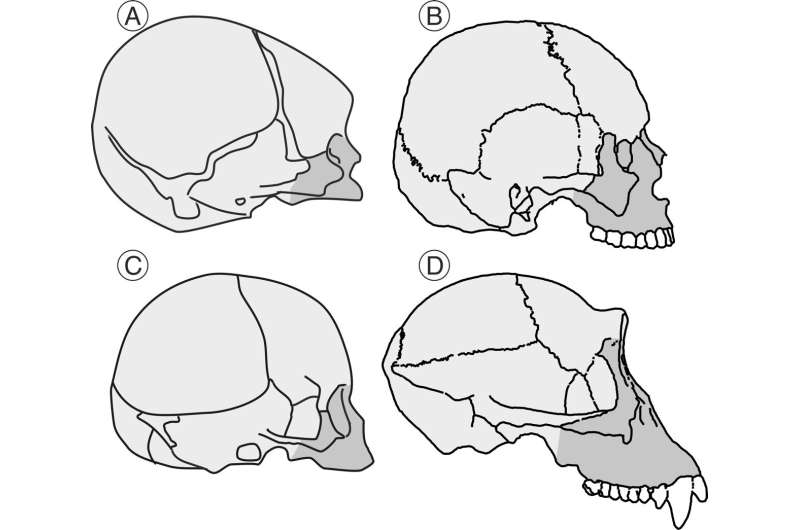Paleontologists reveal new data on the evolution of the hominid cranium

A new research conducted by two paleontologists at the University of Malaga has just revealed that human evolution uniquely combines an increase in brain size with the acquisition of an increasingly juvenile cranial shape.
This paper, which has been published in the journal PeerJ, is the result of a line of research that the UMA started in 2015 supplemented with the analysis of four new hominid crania of specimens that were discovered at a later time: Australopithecus anamensis, Australopithecus prometheus, Homo naledi and Homo longi. Moreover, the research adds juvenile samples of modern species of great apes.
Furthermore, this research brings an innovative approach to the interpretation of hominization in terms of embryonic development, which refers to changes in the start or end timing of the developmental processes, as well as to differences in the rhythm of these processes between an ancestral species and another derived species.
Cranial evolution: Humans and apes
Thanks to these new analyses, they could verify that the representatives of the genus Homo, as well as the australopithecines—our close relatives in the evolution—share with orangutans, gorillas and chimpanzees a negative growth of the neurocranium—the cranial vault, which measures brain development, grows at a slower pace than the rest of the cranium—and a positive one in the splanchnocranium—the dimensions of the face, which correlate with the size of dentition, grow faster throughout development.

"This means that bigger crania present higher relative sizes in the face and more reduced sizes in the cranial vault," explain the professors of the Faculty of Science Juan Antonio Pérez Claros and Paul Palmqvist, authors of this paper.
Greater brain development
Both experts point out that while the cranial evolution of australopithecines followed the same scaling during development as apes, in humans a series of lateral transpositions also occurred.
"The developmental trajectory of the genus Homo turned to a new starting point, where adults retained the characteristics of the infant crania of the ancestral species," they say.
As they explain, these changes entailed a "juvenilization" of cranial proportions, a process known as paedomorphosis ("child-shape"), which enabled a greater brain development in our evolutionary lineage compared to other species.
Finally, this research demonstrated that the cranium of Homo naledi, despite being a relatively recent species in the fossil record of human evolution—less than 300,000 years—show proportions that are similar to those of the first representatives of the human species, the Homo habilis, which are more than 2 million years old.
More information: Juan Antonio Pérez-Claros et al, Heterochronies and allometries in the evolution of the hominid cranium: a morphometric approach using classical anthropometric variables, PeerJ (2022). DOI: 10.7717/peerj.13991
Journal information: PeerJ
Provided by University of Malaga





















